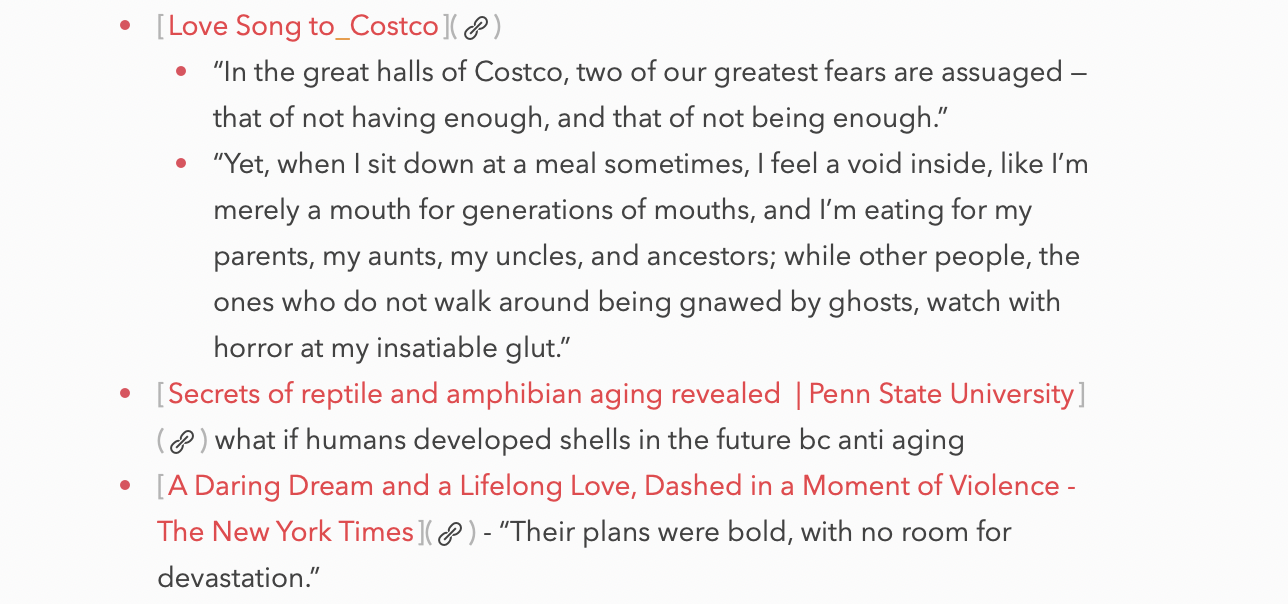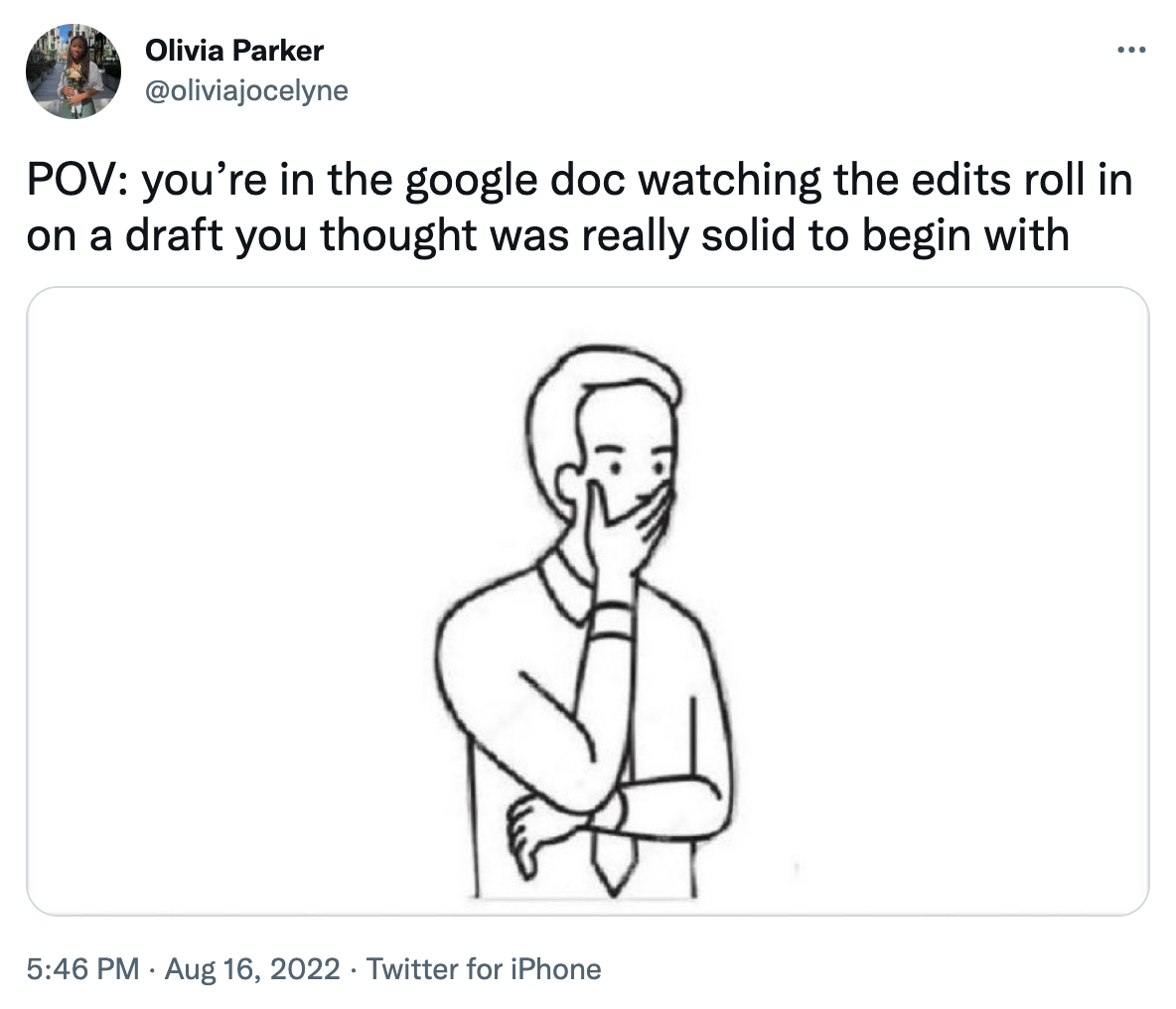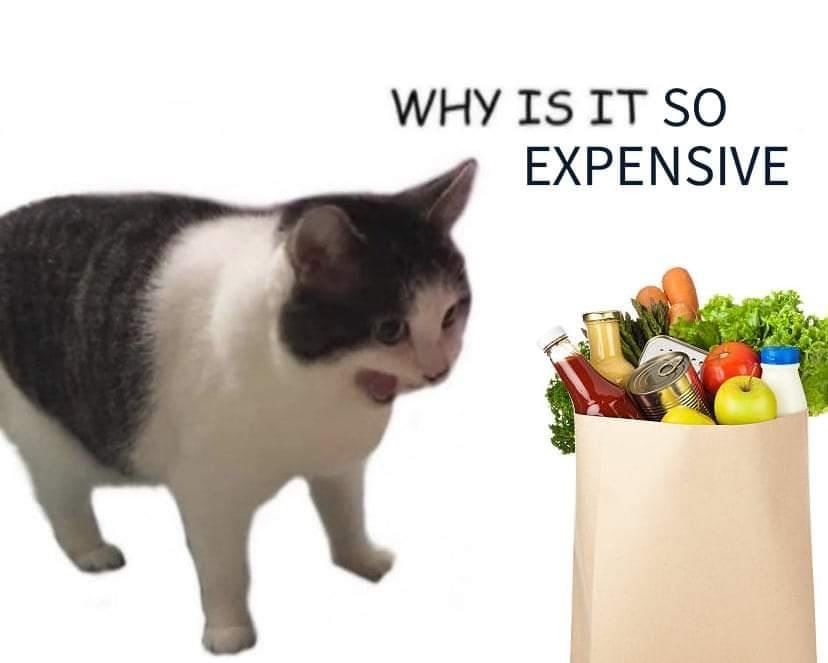Issue 56: Cultivating surprise
One thing I love most about writing is the element of surprise. I love when I unexpectedly write my way into a story, make unintentional connections between characters, or stumble upon broader themes in my work. But I also know that you can’t always wait for inspiration to strike to start writing, and even the most perfect idea doesn’t mean anything if you don’t act on it. When it comes to idea generation and development, what are ways to both provide structure and room to explore?
In 2018, I took an ideas workshop with Ann Friedman and Jade Chang. They said that ideation is a practice, that “an idea does not have to end in an idealized form to be a success.” Two ways of practicing coming up with ideas: being curious and composting. Curiosity is relatively straightforward—ask questions, seek out information, embrace trying new things, and be okay with being out of your depth. Composting is finding what’s interesting and compiling all your obsessions, curiosities, musings, and opinions in one place. This is called a compost file (coined by Natalie Goldberg), or spark file.
For me, this is just a long note I can add to from my phone or computer. It includes snippets of conversations I overhear, inside jokes, articles, links, and quotes. Here is a peek at some recent entries (if I ever write a story about turtle-humans in a Costco, you’ve heard it here first!):

Once you have collected the seeds of ideas, you can then start to grow them by making them more specific, thinking about structure, or deepening their meaning. Friedman and Chang taught us a few idea development strategies. The one I use most often is called “The Venn,” which involves finding the unexpected overlap of two things. When I’m trying to come up with ideas, I like to review my compost file and try smushing different ideas together to see what the result might be.
This ended up being really handy at my generative workshop at Kenyon. With each prompt we got, I would look in my compost file to see what associations jumped out the most. It was an easy way to go with my instincts and start writing as quickly as possible.
My Kenyon instructor also emphasized the importance of surprise in writing. You can draw out the story, but you can also make parts surprising, whether that’s at the sentence level, with your characters, or through plot. One exercise she led us through involved taking a few minutes to write portraits of characters at the beach. After reading them aloud, we passed our sketch to the person to our left, and had to continue our stories by making our two characters interact. Which character needs something? What can they find in one another? The results were zany, fun, deceptively poignant, and completely unpredictable.
The way to cultivate surprise is to keep an open mind. At the same time, structure, prompts, and practice can help you experiment and keep your writing interesting. I don’t write because I always know the answers or how the story will end. I write to surprise myself. I’ll often start writing just to see what comes out of it. Sure, not all of it is good, but all of it is useful. Everything can be returned to the compost. Some ideas may need more time or development. Who knows when you’ll feel that spark next?
What does your ideas practice look like? How are you cultivating surprise in your writing?
Programming note: my next few weeks are really busy so I’ll be back in your inboxes at the end of September!


Creative resources
- “A Person of Color’s Guide to Navigating Writing Residencies” by Hannah Bae
- Register for the Fall 2022 Fairest Writer Workshop Series! The theme is PROCESS and all workshops are free and on Zoom.
- A fun read on the book recommendation charts/memes taking over Instagram.
- Joan Didion on keeping a notebook: “We are not talking here about the kind of notebook that is patently for public consumption, a structural conceit for binding together a series of graceful pensées; we are talking about something private, about bits of the mind’s string too short to use, an indiscriminate and erratic assemblage with meaning only for its maker.”
- A helpful thread from Esmé Weijun Wang on writer-agent relationships.
Recent reads & other media
E and I watched Bullet Train and started the latest season of Never Have I Ever. My friend and I reread A Court of Silver Flames by Sarah J. Maas. I also read Everything I Need I Get From You by Kaitlyn Tiffany, a deep dive into the history and culture of fandom and fangirls through the lens of boy bands and One Direction. The book discusses fandom, social power, and the ways it’s shaped the internet, with a great balance between research and humor. (For example, learning about the Harry Styles vomit shrine with the precision of an archivist.) The “glimpses of memoir” were my favorite element and reminded me how pledging yourself to pieces of culture changes you.
Note: Book links are connected to my Bookshop affiliate page. If you purchase a book from there, you'll be supporting my work and local independent bookstores!
~ meme myself and i ~
Too much grinding. Trying to get comfortable while reading a book. Minimizing the chances of a thought occurring. I love having boxes for my trinkets. The hospitality here is subpar. I’m still listening to Renaissance on repeat.

